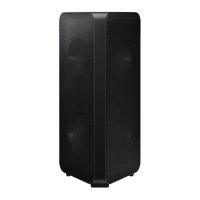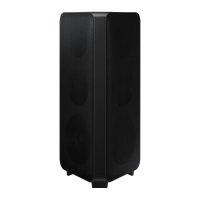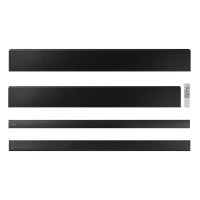Can I Use My TV’s Built-in Speaker and External Speakers at the Same Time?
If you’ve ever wondered whether it’s possible to use both your TV’s built-in speakers and external speakers simultaneously, you're not alone. It’s a common question, especially if you're trying to create a richer sound experience by combining the two.
So, can it be done? Let’s take a deeper dive into whether you can use your TV’s built-in speakers alongside external speakers, and what to consider before you try.
1. Why Would You Want to Use Both?
Before jumping into the technicalities, let’s quickly look at why someone might want to use both their TV's internal speakers and external speakers at the same time. Here are a few reasons:
Enhanced sound quality: Sometimes the TV’s built-in speakers just don’t cut it in terms of volume or sound clarity. Adding external speakers can improve the listening experience, particularly for dialogue-heavy content or intense scenes that need extra bass.
Surround sound effect: If you're using external speakers as part of a surround sound system, combining them with your TV's speakers can create a fuller sound environment, especially in a large room.
Dual audio setups: For certain setups (like a multi-room audio system), you might want sound to play from both the TV and another speaker at the same time.
2. Can You Actually Do It?
The ability to use your TV’s built-in speakers and external speakers simultaneously depends on the TV model and the audio connection method you are using.
Using the TV’s Built-in Speakers and External Speakers via HDMI (ARC)
Many modern TVs come with HDMI ARC (Audio Return Channel), which allows you to connect external speakers or a soundbar. However, not all TVs support simultaneous audio output to both the internal and external speakers.
Sound Settings: On some TVs, there is an option in the sound settings that lets you choose whether to output audio through the internal speakers, external speakers, or both. This is commonly found on higher-end models.
Limited Control: Even if simultaneous output is supported, the ability to control volume levels independently for each speaker (internal and external) might be limited.
Using Bluetooth Speakers
If you connect Bluetooth speakers to your TV, most models will turn off the TV’s built-in speakers to avoid audio conflicts or echoing. However, you can use Bluetooth adapters that allow you to send the audio signal to both the Bluetooth speaker and the built-in speakers at the same time.
Bluetooth & Internal Speakers Combo: Some TVs support simultaneous audio output through Bluetooth and the internal speakers, but it’s less common. You’ll need to check your TV’s audio settings for this option.
Using Optical Audio Out or AUX Out
If you’re connecting external speakers via optical audio out or the 3.5mm AUX output, the TV’s built-in speakers will likely be disabled automatically once you connect the external speakers.
Splitters: If you want to use both at the same time, you can try using a splitter or an audio extractor that can route the signal to both the internal speakers and the external ones. This can help create a more layered sound experience.
3. Challenges and Drawbacks of Using Both
While it might seem like a good idea to use both sets of speakers for enhanced sound, there are a few challenges to consider:
Audio Delay or Echoing
Audio sync issues can occur when sound is coming from both the built-in speakers and external speakers. The speakers may produce sound at slightly different times, causing an echo or delay, especially if the external speakers are connected via Bluetooth.
No Independent Volume Control
In many cases, there won’t be an option to control the volume of the internal and external speakers separately. If you lower the volume on the TV, both sets of speakers will be affected.
Sound Distortion
Mixing different types of speakers (e.g., TV speakers with high-end soundbars or Bluetooth speakers) can result in sound distortion or an unbalanced audio experience, where one set of speakers might overpower the other.
4. Workarounds for Using Both
If you're set on using both your TV's built-in speakers and external speakers, there are a few workarounds:
Use a Soundbar with TV Speakers
Some soundbars are designed to work with TV speakers simultaneously. You can enable this feature through the sound settings on your TV, ensuring that the soundbar adds bass and clarity while the TV handles the mid-range and treble frequencies.
Connect Multiple Audio Output Devices
Some advanced AV receivers or external audio systems allow you to connect multiple output devices to your TV, giving you more flexibility with audio settings. These receivers might let you output sound to both your TV’s internal speakers and a set of external speakers.
5. Final Thoughts
In most cases, it’s possible to use your TV’s built-in speakers and external speakers simultaneously, but it largely depends on your TV model, the type of external speakers you’re using, and your connection method.
If you’re looking for the best sound experience, it’s often more effective to choose one system (either the internal or external speakers) and optimize it. Adding both can sometimes cause audio sync issues, reduced sound quality, and a less-than-ideal listening experience.
For a seamless solution, consider investing in a soundbar or a home theater system that’s designed to work perfectly with your TV for better audio quality and easy control.



